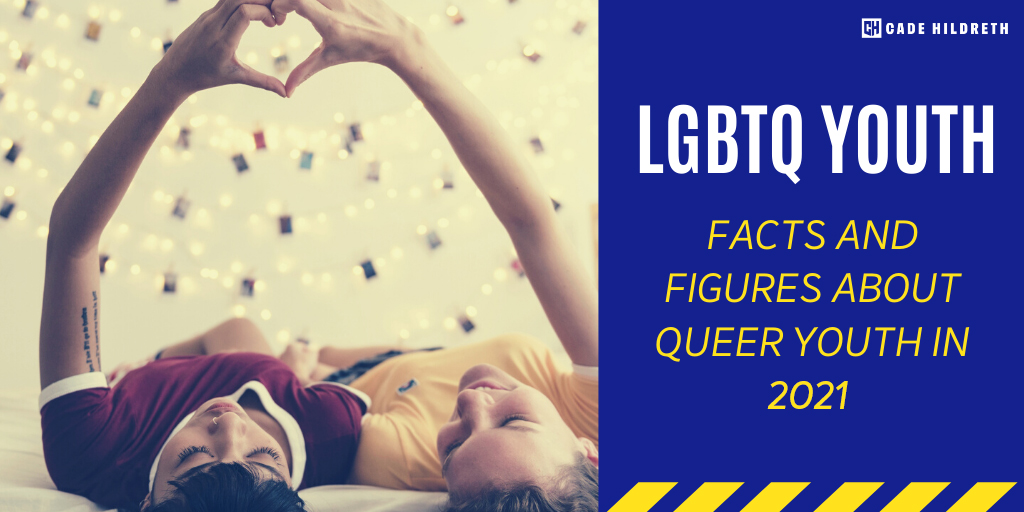|
|
LGBTQ rights have come a long way over the years.
But how can we better understand the experiences and challenges of certain demographics, especially young LGBTQ people?
Statistics can be a handy way to better understand the life of LGBTQ youth, their experiences, environment, and circumstances. Start by taking a look at some of these facts and figures.
Understanding LGBTQ Youth Statistics
Before we begin, we must remember that statistics alone do not explain the experiences, thoughts, and feelings of all LGBTQ youth.
It is also difficult to accurately understand how many people identify as LGBTQ. There is no consensus about how to measure and record sexual orientation.
Some surveys and research rely on respondents self-identifying as LGBTQ. However, some people may not feel comfortable formally identifying themselves as LGBTQ, whilst others may not be familiar with the terms used when responding.
Other surveys and research organizations make estimates based on reports of sexual behavior and attraction. But again, this is not entirely reliable or accurate.
Therefore, a majority of LGBTQ statistics have been estimated to a certain degree.
Identification as LGBTQ
Approximately 10.5% of 13- to 18-year-olds — and 9.6% of 19- to 24-year-olds — identify as LGBTQ in the US. And the number of people who identify as LGBTQ is rising.
In 2012, 3.5% of American adults (8.3 million people) identified as LGBTQ. By 2016, this had risen to approximately 4.1% of American adults (10 million people). Hopefully, this shows that people are beginning to feel more comfortable and confident to express who they truly are.
Coming out and being honest about sexual or gender identity can be hugely challenging and frightening, but everyone has the right to be honest about who they are. There are some tips and guidance on what to do when the time feels right.
Concerning Well-Being
Statistical data can give an insight into the well-being of LGBTQ youths in America, and the challenges that they have to face. These statistics are shocking.
It is estimated that over 1.8 million LGBTQ youth aged 13 to 24 have seriously considered suicide over the past 12 months.
80% of young LGBTQ people have expressed that they feel severe social isolation, and 92% of LGBTQ young people hear negative messages about being LGBTQ.
Young LGBTQ people often suffer because they are not supported in their homes, schools, and communities. At the same time, 26% of LGBTQ youth report that they are most worried about not being accepted by their family, bullying at school, and fear of being out and open about who they are.
However, there is some positivity. 77% of LGBTQ youth say that they know things will get better. It’s important that we all play our part to make things better now.
A Look at Family…
A supportive and accepting family is extremely important for all young people, especially those that identify as LGBTQ.
A recent Human Rights Campaign survey concluded that almost 60% of LGBTQ youth are out to their immediate family.
Acceptance and support from family can be hugely beneficial for an LGBTQ young person. It can have a strong and positive effect on self-esteem, mental health, and general health. It can protect against depression, psychological distress, thoughts of suicide, and substance abuse.
However, not all young people feel comfortable coming out to their family, or feel supported by them. Being honest about who you are to unsupportive parents or close family members can be extremely difficult. LGBTQ students have reported that they struggle most with unaccepting families, rather than school classes, exams, or work.
42% of LBGTQ people have expressed that they are living in an unwelcoming or hostile environment. A high number of LGBTQ youth — 67% — have heard family members speak negatively about LGBTQ people.
Lack of support and outright rejection from family members can have a devastating effect. It is estimated that young LGBTQ people who feel rejected by their family are:
- 4 times more likely to report suicide attempts;
- 9 times more likely to report high levels of depression;
- 4 times more likely to use illegal drugs.
Perhaps as a consequence of unsupportive families, LGBTQ youth leave home more frequently than their heterosexual peers. The figures are hugely disproportionate. They represented approximately 5% to 10% of American youth, but 20% to 40% of the homeless youth.
…And Friends
90% of LGBTQ teenagers come out to their close friends.
Having supportive friends is hugely important for young LGBTQ people, much like having an accepting family. Having friends that are loving and accepting can increase an LGBTQ person’s safety, mental health, and overall well-being.
LGBTQ Youth at School
School is a huge part of life for all young people. 64% of LGBTQ youth say that they are out and honest about their gender or sexual orientation with their classmates.
A positive and supportive school environment can hugely support and strengthen the well-being of LGBTQ young people. Gay-straight alliances, anti-bullying policies, and LGBTQ-inclusive curriculum can all help LGBTQ youth to feel safe and accepted.
However, 6 in 10 LGBTQ students report feeling unsafe at school. In another survey, only 5% of LGBTQ students felt that all teachers and staff were supportive of LGBTQ people.
The most distressing school statistic is that many LGBTQ teenagers are harassed at school, and the proportion is even higher for LGBTQ teenagers of color.
Knowing the Numbers About LGBTQ Youth
Life for LGBTQ youth can be difficult and challenging. But everyone has the right to be honest about who they are, including their sexual and gender orientation. As society continues to accept and understand LGBTQ issues, things are improving.
But LGBTQ acceptance needs to happen everywhere, and it needs to happen now.
If you’re looking for more articles about LGBTQ life, explore this blog.
Join 250,000+ readers who are learning Cade’s secrets, like how to budget, increase income, invest for cash flow, increase confidence, or lose 10 pounds, fast.
